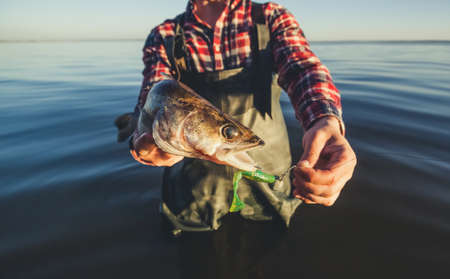The Role of Feeder Rods in UK Coarse Fishing
Feeder rods are a cornerstone of modern coarse angling across British waters, playing a critical role in both match and pleasure fishing. The choice of feeder rod is far from arbitrary; it requires careful consideration of length, action, and materials, each influencing the angler’s approach and success with species such as bream, roach, and barbel. In the UK, rods between 10ft and 13ft are most popular, with shorter lengths preferred for tight swims or small rivers, while longer rods excel when casting at range on larger venues like reservoirs or wide rivers. Action is equally pivotal—progressive or through-action rods offer forgiving flexibility for lighter lines and smaller fish like roach, ensuring fewer hook pulls. Conversely, a tip-to-middle or fast-action rod provides the backbone required for hard-fighting species such as barbel, especially in flowing water. Materials have evolved markedly, with high-modulus carbon blanks now standard among serious anglers for their superior sensitivity and lightweight handling. These attributes allow for subtle bite detection—a must when targeting finicky bream on expansive gravel pits. Ultimately, selecting the right feeder rod is a matter of matching its characteristics to your target species and venue, forming the foundation of a well-executed coarse fishing strategy tailored to British conditions.
2. Selecting the Ideal Reel for Feeder Fishing
When targeting coarse fish on UK waters, pairing your feeder rod with the right reel is crucial for both casting accuracy and effective fish playing. The selection process involves more than just brand loyalty; understanding key reel features can make a tangible difference in performance. Below, we dissect the essential specifications that UK anglers prioritise when choosing a feeder reel, along with a glance at popular brands and models on local fisheries.
Key Reel Features Explained
Feeder fishing demands reels that combine robustness with smooth operation. Let’s break down the critical factors:
Line Capacity
Given the longer casts often required on rivers and stillwaters, a feeder reel should accommodate sufficient line—typically between 100m to 150m of 0.20–0.25mm mono or braid. Too little capacity risks running short during big chucks or when battling larger species like bream or barbel.
Retrieve Ratio
The retrieve ratio (or gear ratio) affects how quickly you can bring in your rig after each cast. For feeder work, a medium to high retrieve ratio—around 5.0:1 to 6.2:1—is generally preferred, ensuring efficient winding while not sacrificing cranking power when bringing in heavy feeders or hauling through weed.
Drag Systems
Modern feeder fishing often involves fine lines and light hooklengths, making a smooth, easily adjustable front drag system highly desirable. This allows you to react swiftly to hard-fighting fish without risking breakages—a regular scenario on busy match venues or wild rivers alike.
Popular Reel Brands and Models in the UK
| Brand | Model | Capacity (Mono) | Retrieve Ratio | Main Drag Type |
|---|---|---|---|---|
| Daiwa | Ninja LT 4000-C | 150m/0.28mm | 5.2:1 | Front Drag |
| Shimano | Aero XR 4000 | 150m/0.25mm | 5.3:1 | Front Drag |
| Maver | Reality Feeder 4000 | 140m/0.23mm | 5.1:1 | Front Drag |
Tactical Considerations for UK Anglers
Selecting a reel isn’t purely about specs—the nature of your chosen venue matters. On commercial lakes with close-range swims, a compact 3000–4000 size might suffice, whereas big natural venues like the River Trent or large reservoirs demand bigger spools for distance work. Don’t overlook build quality; corrosion-resistant bearings and robust handles are valued by British anglers facing unpredictable weather and muddy banksides.
The bottom line: invest in a feeder reel that matches both your tactics and target venues, balancing capacity, speed, and control for consistently successful sessions on the water.

3. Essential Bait Tips for UK Coarse Species
When targeting coarse fish across the UK’s iconic venues, bait selection and preparation are every bit as important as your feeder rod and reel setup. Success on the bank often comes down to understanding how to adapt classic baits—maggots, pellets, groundbaits, and alternatives—to the species, water conditions, and prevailing trends seen on the match circuit.
Maggots: The Timeless Staple
Red and white maggots remain a go-to for roach, perch, chub, and bream. For maximum effectiveness, keep them chilled in maize or sawdust to prevent sweating and lethargy. When fishing pressured waters or during cooler months, consider using single or double fluoro maggots for added visibility and attraction. On commercial fisheries, pinkies and squatts come into their own when bites are hard to come by.
Pellets: Versatility and Attractiveness
Micro and 4mm feed pellets are now standard fare for carp, F1s, and tench. Soaking your micro pellets just enough to create a soft but not mushy texture ensures they break down attractively around your feeder. Hookable expander pellets can be enhanced with flavour dips—krill, scopex, or sweet corn being popular choices on today’s match scene. Always carry several pellet sizes to adjust feed rates according to fish response.
Groundbait: Foundation of Feeder Fishing
A well-mixed groundbait underpins most UK feeder approaches. Opt for dark mixes rich in crushed hemp or sweet biscuit for skimmers and roach on natural waters; heavier fishmeal blends work wonders on commercials teeming with carp and F1s. Sieve your mix to eliminate lumps for a consistent release from your feeder—vital when targeting wary fish mid-match.
Alternative Baits: A Tactical Edge
Don’t overlook alternative hookbaits such as sweetcorn, worms, casters, or even luncheon meat cubes when targeting specimen bream or barbel. Bread punch is a killer on rivers and canals for big roach during winter months. Modern match anglers increasingly experiment with wafters and soft hookers flavoured with pineapple or chocolate orange—often nicking bonus bites when traditional baits fail.
Presentation and Flavour Trends
Today’s competitive scene sees subtle presentation tweaks making all the difference: banded versus hair-rigged pellets, critically balanced wafters over micros, or boosted maggots soaked in liquid flavours. Take cues from winning anglers at local opens—many swear by adding a pinch of turmeric or garlic powder to their groundbait for extra pulling power. Ultimately, flexibility is key; be prepared to change bait colour, size, or flavour mid-session based on fish feedback.
4. Feeder Fishing Techniques and Strategies
Success in UK coarse fishing often hinges on the angler’s ability to select and adapt feeder fishing tactics according to venue type, target species, and prevailing weather conditions. Below, we break down the three most widely used feeder approaches—method feeders, cage feeders, and open-end feeders—and discuss strategic adjustments for river and stillwater environments across Britain.
Method Feeder Tactics
The method feeder is a go-to choice on commercial stillwaters teeming with carp, bream, and tench. Its design enables precise bait delivery, presenting a compact pile of groundbait with a hookbait nestled within or just beside it. This tactic is particularly effective in warmer months when fish are actively feeding in the margins or at mid-range. To maximise results:
- Groundbait Selection: Use sticky mixes that mould well but break down quickly, such as fishmeal-based blends with micro pellets.
- Hookbait Choices: Opt for sweetcorn, soft pellets, or mini boilies to match the main feed.
- Weather Adaptation: In colder weather, scale down your feed and use smaller hookbaits to tempt wary fish.
Cage Feeder Approaches
Cage feeders excel in flowing rivers like the Trent or Avon, where you need to disperse attractants downstream to draw in chub, barbel, and dace. The open mesh design lets water flow through easily, releasing particles quickly. Key points include:
- Feed Consistency: Choose coarser groundbait mixes that will empty rapidly from the cage yet retain enough weight to hold bottom.
- Location: Cast upstream or into slacks behind features to avoid excessive drift.
- Adapting to Flow: Use heavier feeders in strong currents; lighter cages suffice in gentle flows or near bankside cover.
Open-End Feeder Techniques
The open-end feeder is a versatile option for both stillwaters and slower-moving rivers, ideal for targeting skimmers, roach, and bream. It allows for a variety of feed types—from crumbly bread mixes to maggot-laden concoctions. Consider these strategies:
- Bait Mixes: Experiment with combinations of groundbait, chopped worms, and casters to appeal to different species.
- Presentation: Vary leader lengths to suit fish activity—shorter for aggressive bites; longer if fish are cautious.
- Water Clarity: Use darker mixes in clear water; brighter groundbaits can attract attention in coloured conditions.
Feeder Tactic Comparison Table
| Tactic | Best Venue | Main Species | Bait Type | Weather/Water Condition Adaptations |
|---|---|---|---|---|
| Method Feeder | Commercial Stillwaters | Carp, Bream, Tench | Packed Groundbait & Pellets Corn/Boilies/Pellets on Hook |
Lighter feeds & smaller baits in winter; larger piles in summer warmth |
| Cage Feeder | Rivers (Medium-Fast Flow) | Barbel, Chub, Dace | Coarse Groundbait Maggots/Casters/Worms on Hook |
Heavier feeders for strong flow; use upstream casts in high water levels |
| Open-End Feeder | Lakes & Slow Rivers | Bream, Roach, Skimmers | Bread/Maggot Mixes Worm/Caster/Bread Flake on Hook |
Darker mixes for clear water; finer blends during cold snaps or low activity periods |
Tactical Takeaway
No single feeder approach dominates every session. The best UK coarse anglers continually assess weather patterns—such as chilly north-easterlies or sudden rain fronts—and adjust their tactics accordingly. Whether you’re faced with coloured floodwater on a wild river or mirror-flat calm on a well-stocked commercial fishery, choosing the right feeder style and adapting presentation can be the difference between a blank day and a memorable haul.
5. UK-Specific Tackle and Venue Regulations
Understanding Local Restrictions on Feeder Fishing Gear
In the UK, coarse fishing is governed by a range of specific regulations that can significantly influence your feeder rod, reel, and bait choices. These rules are designed to protect fish stocks, maintain fair play, and ensure responsible angling across public and private waters. Before setting out, it’s crucial to familiarise yourself with both national legislation and the particular requirements of the venues you intend to fish.
Rod Licences: A Legal Necessity
Anglers aged 13 or over must possess a valid Environment Agency rod licence to fish for coarse species in England and Wales. Failure to produce a licence when asked by bailiffs can result in heavy fines or prosecution. Remember, your licence covers up to two rods for coarse fishing; if you plan to fish with more than two rods (for example, using multiple feeders), you’ll need an additional permit. Scottish coarse anglers should note that while there’s no rod licence requirement north of the border, local fisheries may impose their own rules.
Venue-Specific Tackle Restrictions
Many commercial and club-managed fisheries across Britain enforce tackle regulations tailored to their waters needs. For feeder anglers, this might include bans on certain feeders (e.g., method feeders or elasticated systems), limits on hook sizes, barbless-only hooks, or restrictions on line breaking strains to safeguard resident fish. Always check venue signage or consult with bailiffs before setting up – ignorance is rarely accepted as an excuse.
Bait Limitations and Groundbait Rules
Bait restrictions are common in UK venues and can directly affect feeder tactics. Some fisheries limit quantities of groundbait, particles, or specific baits like pellets, maize, or boilies due to water quality concerns or stock management policies. On natural waters such as canals and rivers, closed seasons may apply (typically from mid-March to mid-June), making it illegal to target coarse species at these times. Club waters may also operate total or partial bait bans during spawning periods.
Club Memberships and Match Fishing Etiquette
If fishing club-controlled stretches or entering matches, be aware of additional rules set by committees. This might include peg allocation systems, minimum landing net sizes, use of unhooking mats for specimen fish, or even mandatory keepnet usage in contests. Breaching these can lead to disqualification or loss of membership privileges.
Tactical Adjustments for Compliance
Adhering to regulations is not only about avoiding penalties – it’s also about maximising your effectiveness within legal boundaries. Adapting your feeder rigs, choosing permitted baits wisely, and selecting compliant rods and reels ensures your session remains productive and enjoyable wherever you cast a line in the UK.
6. Match Day Preparation: Putting It All Together
Technical Guide to Assembling Your Feeder Set-Up
For UK coarse fishing, match day is the culmination of careful planning and technical finesse. The right feeder rod and reel pairing, matched with a well-thought-out bait strategy, can make all the difference against a field of savvy competitors. Begin by selecting a feeder rod with a test curve suited to your venue—typically 11-12ft for commercial fisheries or rivers, and slightly longer for natural venues requiring greater casting distance. Pair this with a robust yet smooth-actioned reel, loaded with low-stretch monofilament or braid for enhanced bite detection.
Rig Arrangements: Precision and Adaptability
Match anglers in the UK favour reliable rigs such as the helicopter or inline method, which minimise tangles and maximise presentation. Use quick-change swivels to adapt to changing conditions—a heavier feeder if the wind picks up, or a lighter model when accuracy is paramount. Short hooklengths (4-6 inches) often work best for wary coarse fish, especially when using groundbait or micro pellets as attractants.
Baiting Strategies: Layering Attraction
Success on British waters demands a tailored approach to baiting. Start with a modest carpet of groundbait laced with chopped worms, pinkies, or micro pellets. This draws fish into your swim without overfeeding them. Regular top-ups are essential—little and often keeps shoals competing. On pressured venues, consider flavour enhancers or coloured baits to trigger bites from cautious fish. Corn, maggots, and soft pellets are staple choices for roach, bream, and skimmers; don’t overlook hemp for finicky feeders.
Swim Management: Reading and Reacting
Efficient swim management separates consistent winners from also-rans in UK matches. Mark your line clip to ensure every cast lands precisely on your chosen spot. Watch for subtle signs—rolling fish, bubbling, or liners—and adjust feeding frequency accordingly. If bites dry up, try shortening your hooklength or switching bait colour to reignite interest. Keep gear tidy and spare rigs at the ready for swift changes as match dynamics evolve.
The Winning Mindset
Ultimately, preparation underpins success on match day. Combine technical know-how with adaptability and you’ll be well-placed to outfish your peg neighbours on Britain’s diverse coarse fishing circuit.

